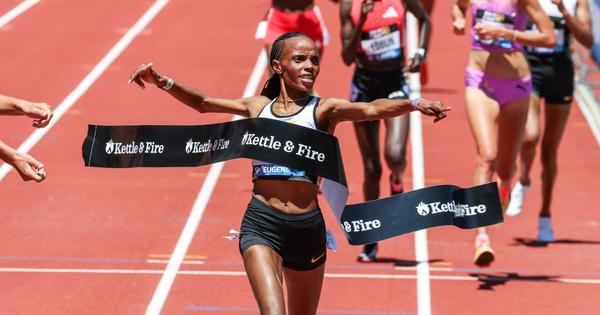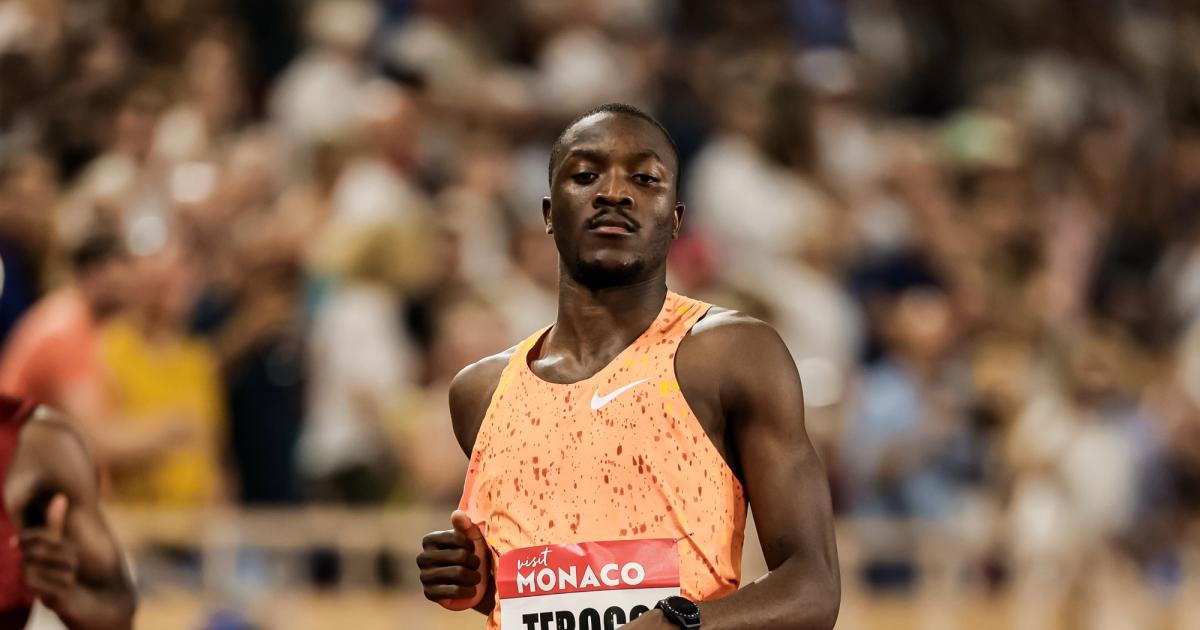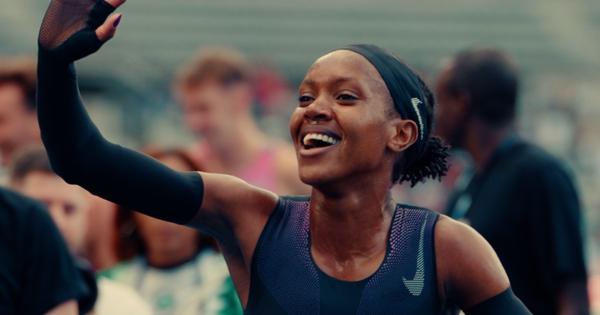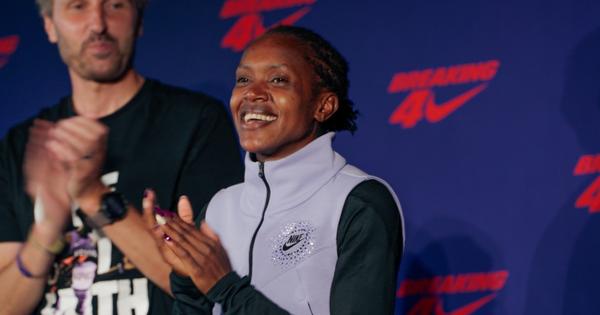By Citius Mag Staff
July 9, 2025
While the Pre Classic served as a midseason momentum springboard for plenty of the brightest stars in the sport, for a handful of others, it was a weekend trip to Eugene they’re likely actively trying to forget. World and Olympic champions Christian Coleman (10.06 for 7th in the 100m), Athing Mu-Nikolayev (2:03.44 for last in the 800m), Sha’Carri Richardson (11.19 for last in the 100m), and—to a far lesser extent—Cole Hocker (3:47.43 for 4th in the mile) all posted performances below what they’re capable of at their peaks.
There are still about three weeks until the USATF Outdoor Championships. That’s not a ton of time to correct course, but it doesn’t take much to turn things around in this sport—dialing back on training load, clocking one confidence-building result, or repeating your favorite truism (“talent doesn’t go away,” “just gotta see one go in,” etc.) in the mirror until something clicks mentally.
One mantra of choice always seems to crop up around this time—“it’s all part of the plan.” Sub-par results are, for some, simply the cost of doing business. Richardson’s slow start to the season is concerning, but it’s entirely possible she’s purposefully on a more gradual buildup than her peers, given to the fact that she’s already secured her spot on the starting line in Tokyo thanks to her status as defending World champion. Similarly, Noah Lyles’s absence from the outdoor circuit to date may be interpreted at the moment as a red flag about his health or fitness—but if he shows up to Monaco and absolutely dusts the competition, it’ll seem more like a calculated scheduling decision.
Ultimately, we only know as much as athletes are willing to tell us. Mu-Nikolayev deserves kudos for delivering an honest post-race assessment of her spot in the season; she didn’t offer excuses or try to reframe her performance as better than it was. It’s clear that racing an international-caliber field is still a tall order for her; whether that’s due to fitness, comfort, tactics, or all three is less clear. She’s probably run out the clock on getting to 100% before USAs, so the question now is whether Mu-Nikolayev’s generational talent can carry her through to a top-three finish and extend her season to Tokyo, where she does still have time to show up capable of racing for gold.
In track and field the reality is you have to be at or near your peak, both mentally and physically, to land atop a global podium. You aren’t going to Michael Jordan “Flu Game” your way to a gold medal off of sheer grit and determination. If the fitness isn’t there, or you’re nursing even a mild case of the yips, you simply won’t be in the conversation. Even the most preternaturally gifted track athlete in the world isn’t so far ahead of their global peers at a baseline to pull that off.
The exception, of course, to that rule (as with so many others) is Sydney McLaughlin-Levrone, who handily dispatched a strong field in the 400m at Pre but was unsatisfied nevertheless with her 49.43 result. McLaughlin-Levrone has never in her life needed to “turn around” a season, but she does have tough decisions to make about which 400m—flat or hurdles—to contest at USAs, Worlds, or both, and a middling result likely didn’t make that choice any easier.
But before we write up a bunch of eulogies for 2025 track seasons that are still far from complete, there’s time for a tweak. Track and field is full of examples of stunning mid-season reversals, where an athlete miraculously (from the outside perspective at least) puts the pieces together at just the right time after a string of frustrating outcomes. With precious little time before the next work trip to Eugene, the question on everyone’s mind is what will do the trick for you?
Race more: It seems this is the course of action Camp Kersee is taking, with both McLaughlin-Levrone and Mu-Nikolayev running it back at the Ed Murphey Classic this weekend. SML has been forthcoming in the past about the challenges of measuring effort when switching from the 400m hurdles to the flat 400m, and her 2023 season was a perfect example: she went out WAY too hard and got beat in Paris, but learned a valuable lesson and came back with the first open sub-49 of her career at USAs. For Mu-Nikolayev, it’s all about getting reacquainted with running sub-60 second quarters in a pack and changing gears when the time comes. Practice makes perfect, and sometimes the best way to practice racing is to, well… race!
Race less: Especially for distance runners, the constant grind of chasing paychecks and PBs can take its toll. Whether it’s an acute injury or simply the cumulative mental and physical burnout of crisscrossing Europe and/or the continental United States every weekend, a grueling race schedule isn’t always the best way to create positive momentum. This year, Grant Holloway is the poster boy for taking a strategic step back: normally a weekly regular on the DL circuit, Holloway took nearly two months off after a last-place finish in Xiamen in April to address a nagging injury issue and is in the process of working his way back, with wins still to come but his three best times in his most recent three races.
Make a change: This is perhaps the most high-risk, high-reward strategy. Changing sponsors, coaches, or training setups mid-season when things are going poorly can be a necessary reset, but any sort of new circumstances usually require an adjustment period that could take years. When it works, it works, with the most dramatic recent example being Fred Kerley’s early season sponsor switch, going from a season best of 10.03 to his second Olympic medal in the space of about four months. The jury’s still out on Emily MacKay’s big move—she’s now under the tutelage of Pete Julian after two-ish seasons as a pro in Boston, but early results look promising. After a set of middling Grand Slam results in May, she popped off a 3:57.91 at Pre, the second fastest time of her career.
Stay the course: Cole Hocker may be the best middle-distance runner in the world at peaking for championships. In 2023, Hocker had a slow start to the season after an injury-shortened 2022 campaign, racing only twice before USAs (both in Oregon) and ending up seventh in the final in Budapest. Last year, his race efforts up to this point in the season were four pace jobs, an 11th-place finish in the 5000m in LA, and a seventh-place finish at the Bowerman Mile. And we all know how that turned out. Planning a track season contains inherent tradeoffs, and one of the toughest unseen parts of being a pro runner is weighing your financial incentives, personal strengths, and risk tolerance, while mapping out a training and racing plan that balances all three.
Like almost anything in track and field, there’s no one-size-fits-all solution. But we’re now at the point of the season where anyone who’s not currently happy with where they’re at needs to make a potentially-tough decision about how to proceed, and more importantly, trust that the path they do take will lead to the end justifying the means.

Citius Mag Staff




